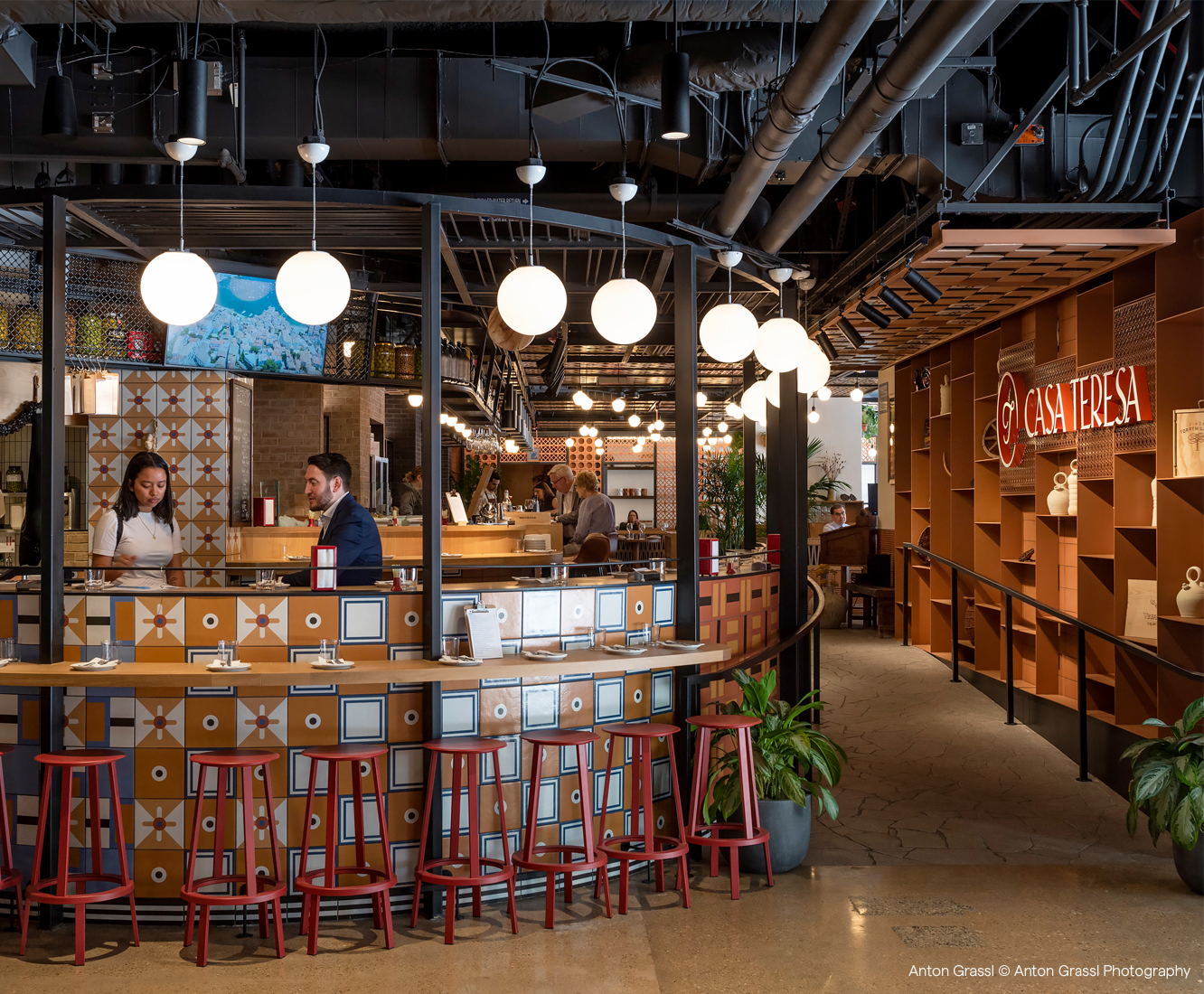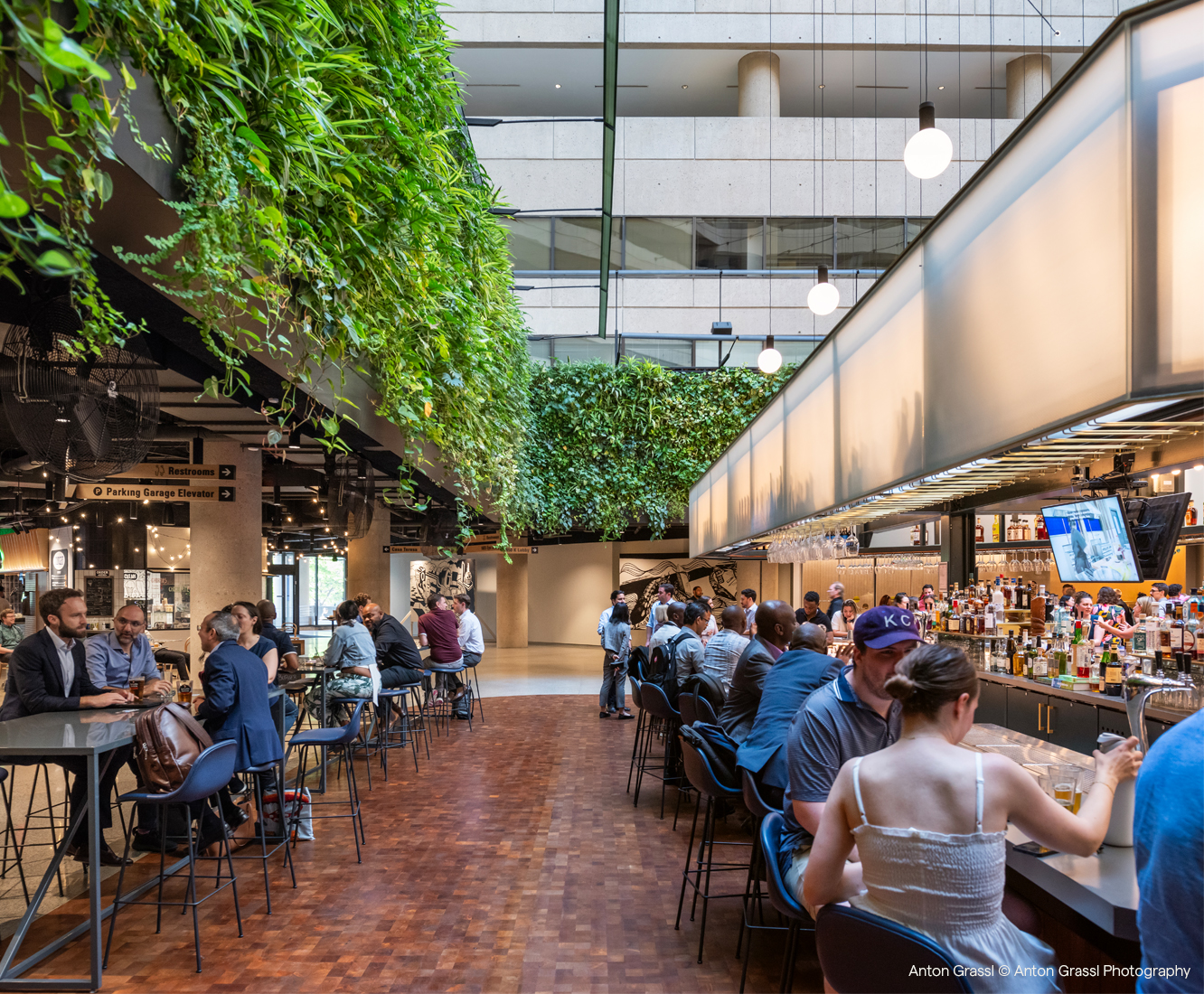With many design considerations pertaining to MEP systems integration, the GHT team utilized their expertise with renovation and repositioning projects to ensure efficient utilization of resources and seamlessly integrate the MEP systems throughout The Square.
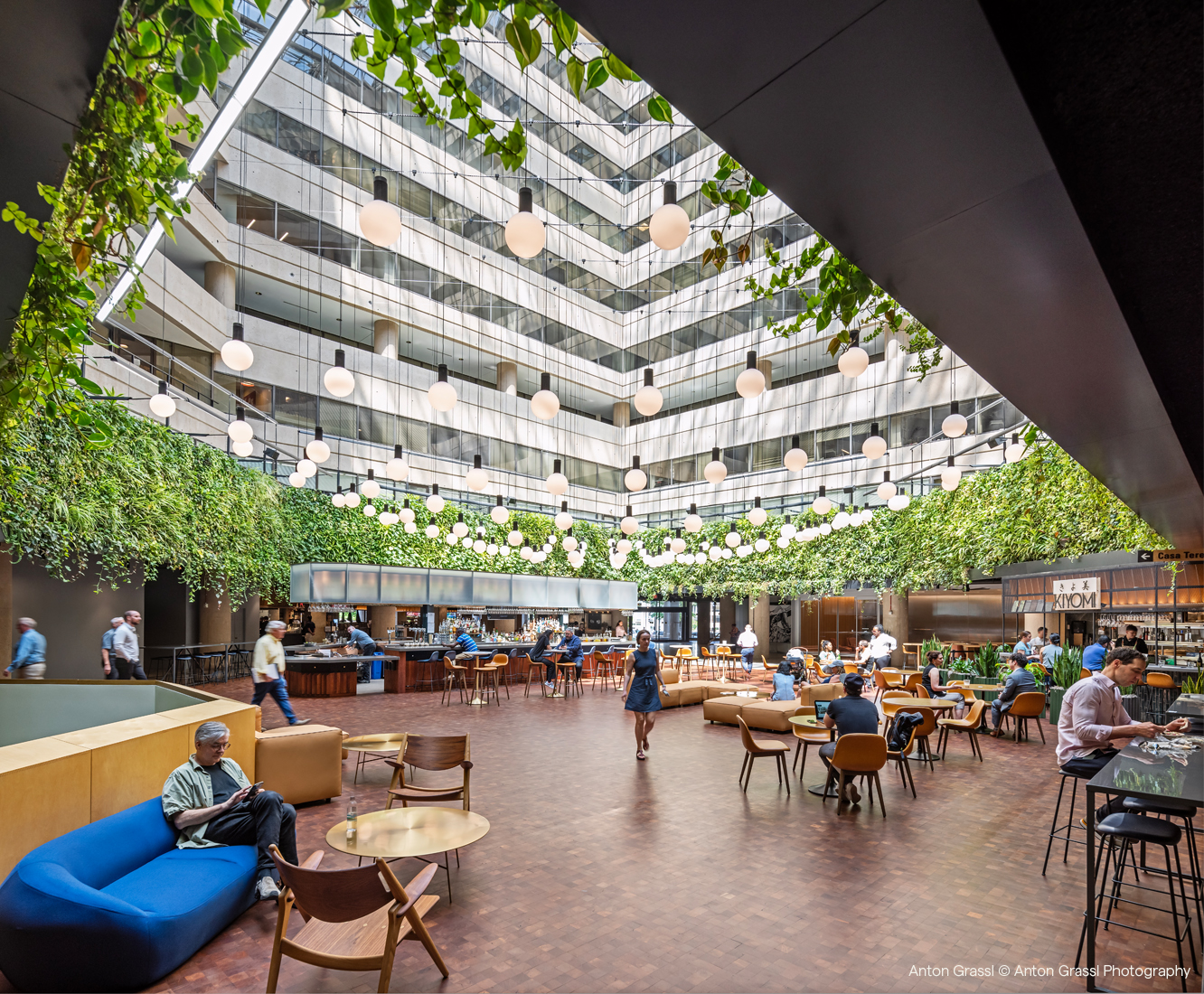
Sample the City
GHT provided mechanical, electrical, and plumbing (MEP) engineering design and energy modeling services for the renovation of The Square, the highly anticipated food hall and market in the International Square Building. Designed to meet LEED v4 ID+C Retail certification requirements, this 25,000 SF venue has revitalized downtown DC with the capacity to host up to 500 diners in its indoor and outdoor spaces. The food hall is supported by a 9,000 SF shared-use kitchen on the 1st level below grade. Additional amenities for the building occupants incorporated in the renovation include a 7,000 SF Zo.Fit fitness center and a 3,500 SF conference center.
With 16 unique food stalls, diners can enjoy a variety of cuisines. In addition to the access vendors have to the shared-use kitchen, which includes fryers and grills with the necessary exhaust, each individual food stall is equipped with hoods and kitchens that cater to the unique equipment and system needs of each vendor.

Elevating an Existing Building
The Square is comprised of three buildings; 1825 Eye Street, 1850 K Street, and 1875 Eye Street, which were all constructed between 1976 and 1981. When the last building was constructed, the three buildings were enclosed with an atrium roof, and the lobby level became the connection point between buildings and a pass-through to neighboring streets. While the pass-through provided a central hub for tenants and visitors, over time, the food court and amenities became outdated. In 2019, the owner initiated the renovation project with the intent of transforming the underutilized space into a vibrant hub.
From design through construction to vendor move in, GHT supported the building owner and design team by providing unique value in ensuring efficient utilization of resources and seamless integration of MEP systems.
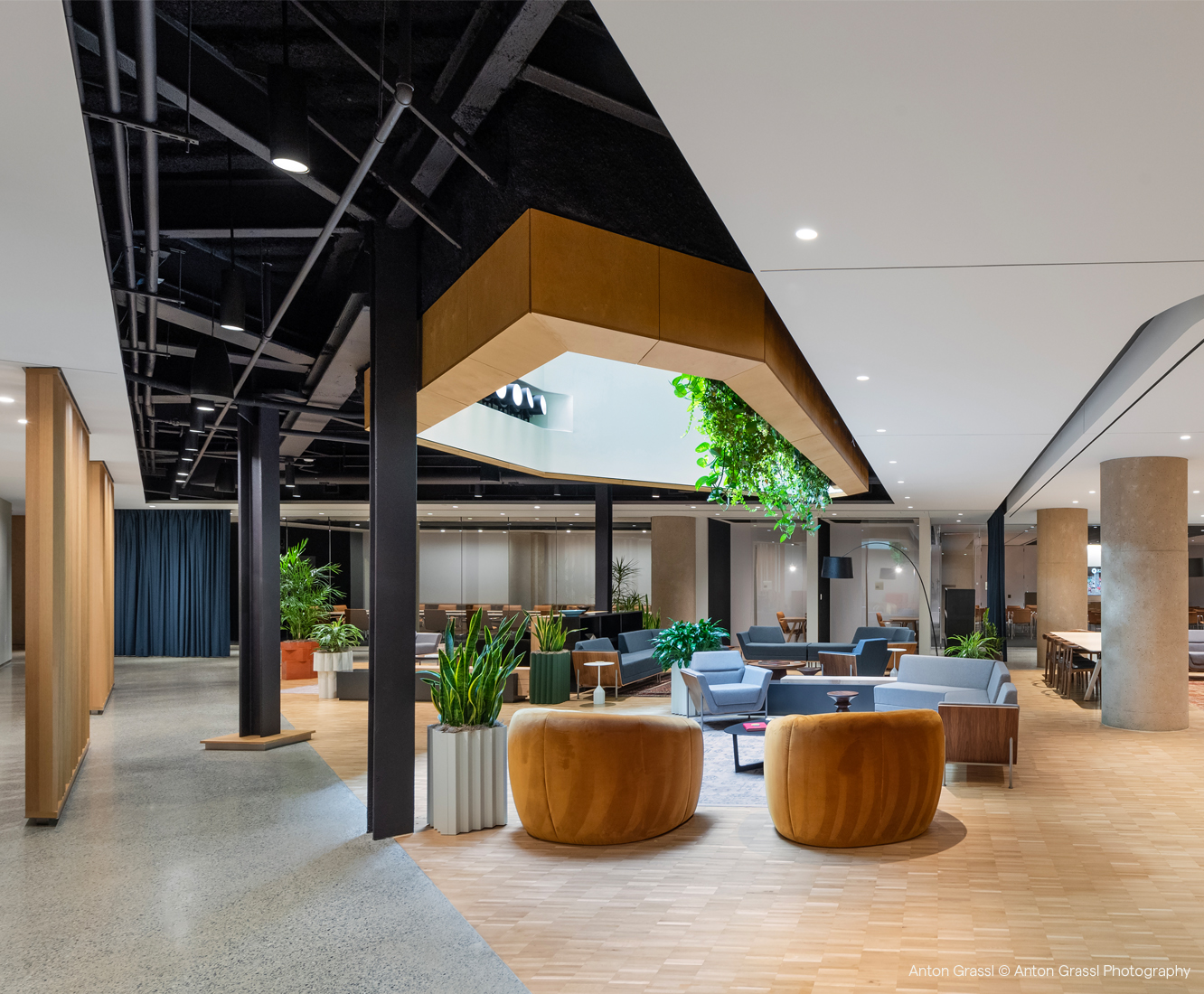
Navigating Existing MEP Systems
At the start of the project, GHT had limited access to survey the existing MEP conditions of the occupied buildings. To overcome this limitation, the GHT team worked with the owner and the general contractor to have portions of the space demolished early in the design process. The design team was able to survey and conduct 3D scanning to assist in building the architectural and structural building model. Once additional access was available, GHT surveyed the existing MEP systems to verify the original base building drawings.
To determine if the existing MEP systems capacity could support the new project, the design team reviewed the electrical service, existing mechanical chilled water and condenser water plants, and plumbing systems for all three buildings. Through GHT’s survey and analysis, the owner saved money and time by preserving the existing electrical and plumbing systems.
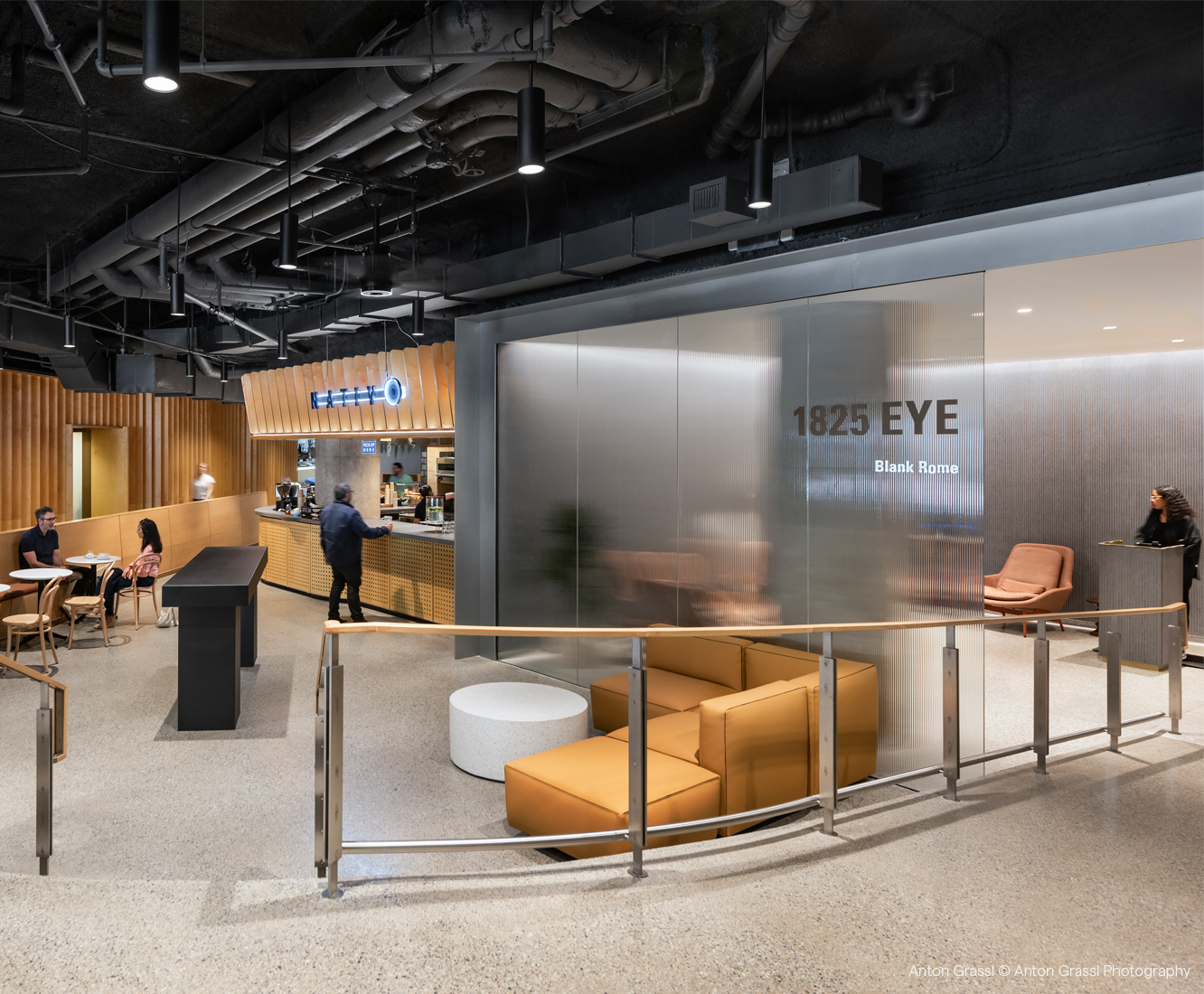
Utilizing Existing Systems
For the electrical system, the GHT team was able to utilize the existing electrical service, switchboards, and retail troughs to avoid extensive electrical infrastructure upgrades. The existing plumbing system was also capable of supporting the water, gas, and sanitary services without any modifications to the existing utility connections.
While GHT was able to utilize the existing electrical and plumbing systems, the team identified the need for a new air-cooled chilled water plant to address the existing capacity limitations of the mechanical systems and support plant operations. Utilizing this option enabled the design team to select chillers that offered a broad operational range and higher efficiency compared to the existing plant.
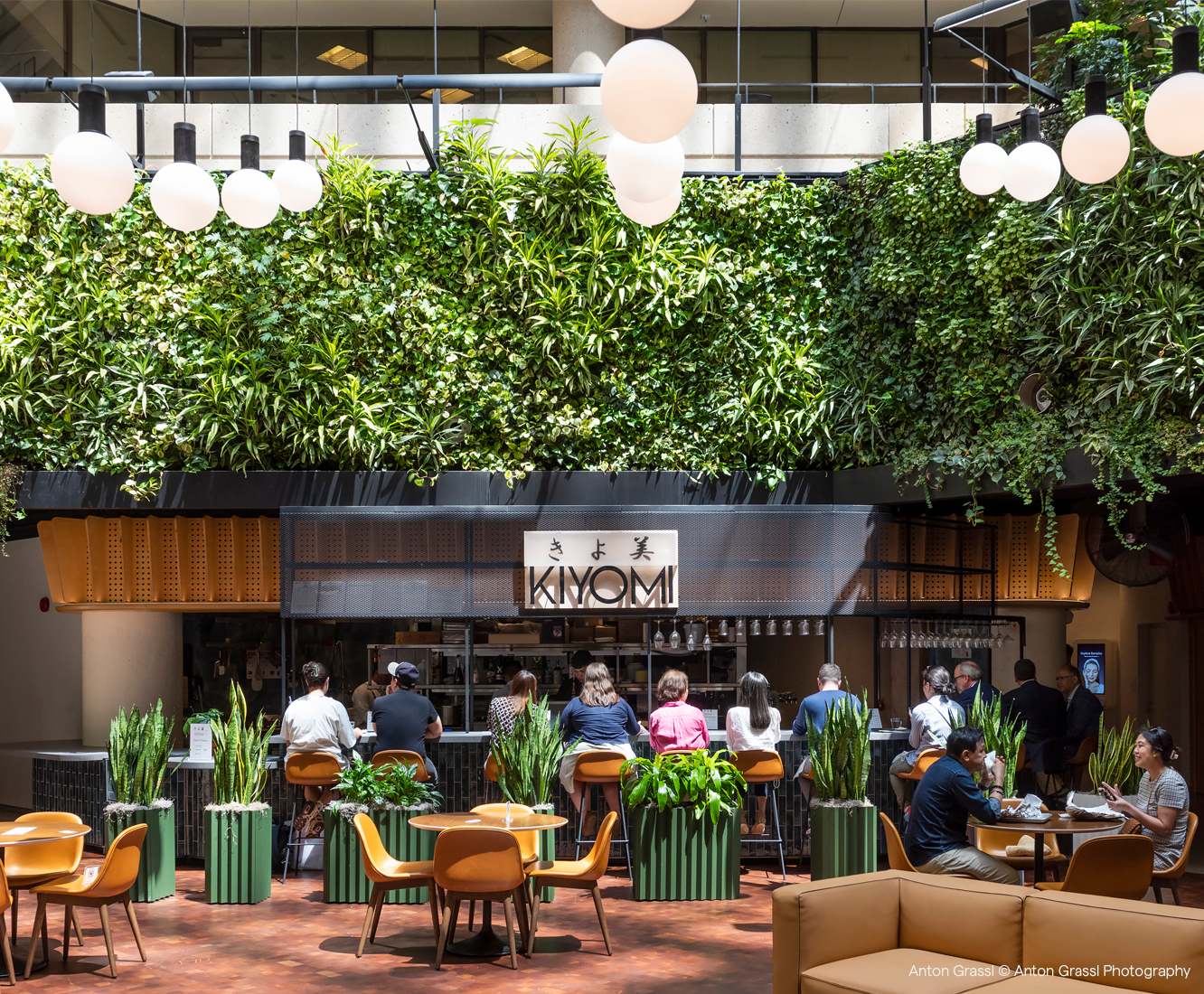
Bringing the Outside In
The atrium is framed by a 2,400 SF hexagon-shaped living wall, supported by the integration of power for plant lighting, water for the irrigation system, and nozzle-style supply air diffusers to minimize disruption to the living wall. Due to the location and desired aesthetics, gravity drainage was unattainable, so GHT designed a unique plumbing system, which hangs above the occupied space and employs a pump system for drainage.
Beyond the living wall, the design team realized the owner’s vision of bringing the outdoors inside with the incorporation of a natural ventilation system. Located in the primary food hall area, the system responds to indoor and outdoor conditions, which are evaluated using a rooftop weather monitoring station, as well as temperature, pressure, and dewpoint sensors located throughout the space.

Natural Ventilation System
Utilizing a natural ventilation model developed by a third-party consultant, GHT implemented strategies for monitoring and controlling the natural ventilation system to inform the interaction between the system and the mechanical equipment serving the area.
When outdoor conditions are favorable, the natural ventilation system engages fans throughout the atrium and food hall to pull in outdoor air and evacuate warm air through the top of the atrium, while disabling mechanical cooling to prevent wasted energy. An indicator light illuminates green to signal the food hall operators to manually open the façade doors and unify the indoor and outdoor dining space.
When temperature and humidity in the food hall exceed comfort limits, the indicator light illuminates red, the sequence reverses, and mechanical cooling is reenabled.
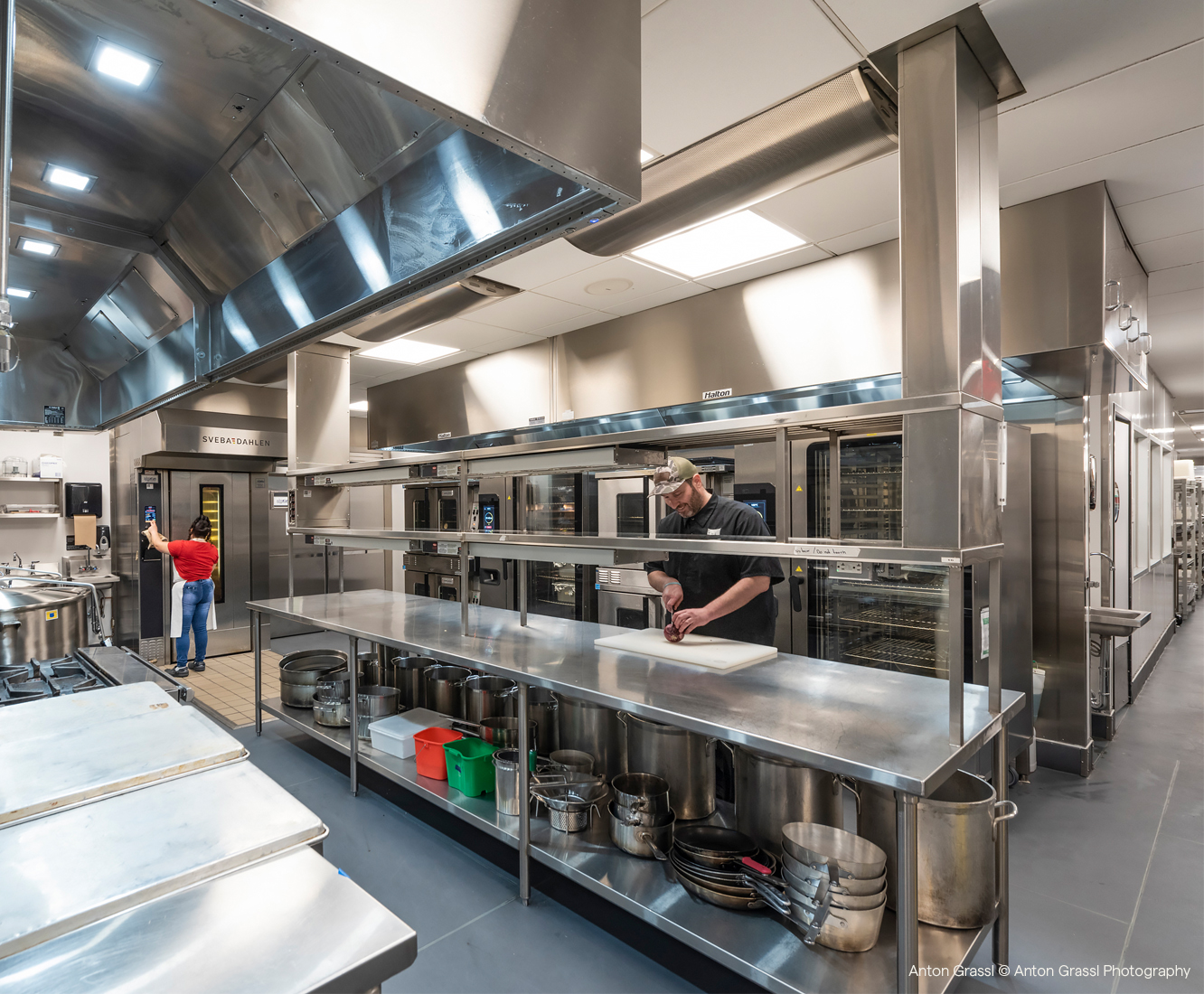
Office Space to Dining Experience
Food service spaces routinely require MEP infrastructure that is often not found in existing office buildings. This posed a significant challenge for the incorporation of nearly 35,000 SF of food service area for The Square, given that commercial kitchen exhaust systems typically need to be routed to a building’s roof, which can be a challenge in existing buildings.
To overcome this obstacle, GHT reused the existing vertical commercial kitchen exhaust shafts from the prior food court, working closely with the food service consultant to ensure the exhaust capacities for the new cooking hoods aligned with the existing ductwork capacity. The commercial kitchen exhaust systems were designed for demand-controlled kitchen ventilation, allowing them to modulate airflow based on hood use and accommodate a variety of operating schedules. Three 2,000-gallon grease interceptors and multiple electric hot water generating plants were added to serve the food service spaces and corresponding amenities.
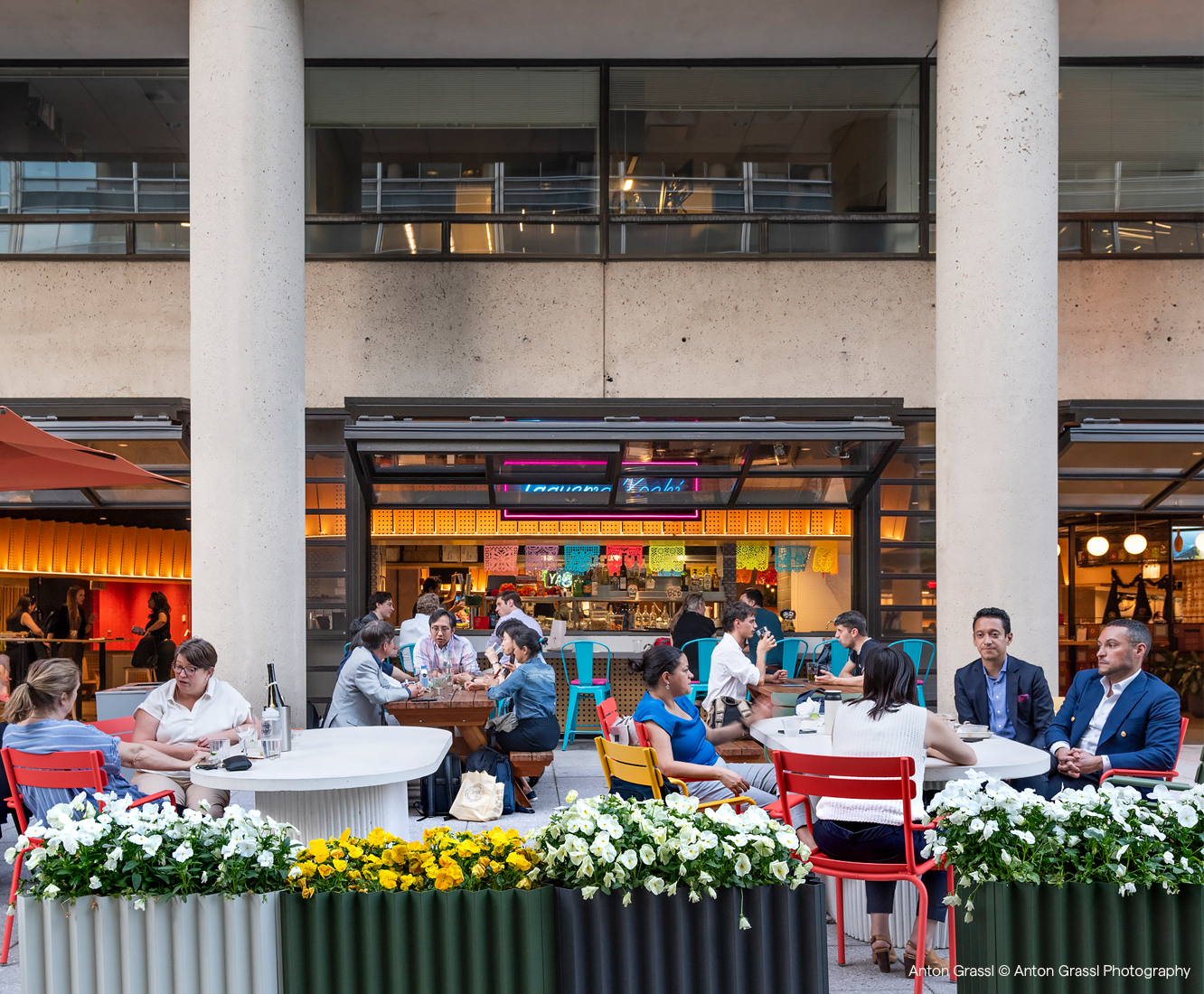
Navigating Existing Infrastructure
Another challenge of the existing infrastructure was that the building’s electrical system had not originally been designed to accommodate the extensive loads required by the new food service area.
Through a thorough evaluation of the existing system and utilization of the original retail service, the building was able to accommodate the new food service loads without requiring a significant upgrade of the existing electrical system.
As the DMV continues to convert existing office buildings into environments where people can live, work, and play, GHT is a resource to clients and partners from early concept consulting to construction.
